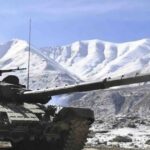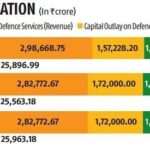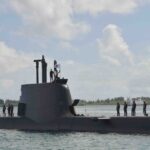
Zorawar light tank, developed by DRDO after PLA’s Ladakh intrusions, is to be a match for Chinese ZTQ-15 tank (pictured above)
By Vikas Gupta
Defence News of India, 16th Jan 24
During April and May, an indigenous light tank that the Defence Research & Development Organisation (DRDO) is developing, will commence “development trials” in the brutal summer heat of Rajasthan’s Thar desert.
These trials, which will be followed by “user trials”, are to confirm whether the Indian tank is a match for the Chinese ZTQ-15 light tank, which it could face in battle in the high altitude deserts of Eastern Ladakh and Sikkim.
The tank has been named Zorawar, after the 19th century general who conquered Ladakh and Baltistan for his Dogra overlords.
New Delhi decided in 2020 to design, develop and manufacture some 300-500 light tanks after hundreds of Chinese soldiers of the People Liberation Army (PLA), supported by tanks and artillery, intruded into Indian territory in Ladakh. They remain there even after 20 rounds of talks between senior military commanders from both sides.
The Indian Army has airlifted close to 200 tanks to Ladakh but the PLA enjoys an advantage. Indian tank units struggle to move their underpowered, Russian-origin T-72 tanks over 17,500 feet high passes. In contrast, China’s ZTQ-15 light tanks, which weigh just 33-tonnes (36 tonnes with additional slap-on armour), move through the 14,000 feet-high valleys with far greater ease.
The ZTQ -15’s 1,000 Horse Power (HP) Norinco engines, generate power-to-weight ratios of more than 30 HP per tonne – adequate even for that oxygen-depleted altitude.
In contrast, India’s 42-tonne T-72s, with their underpowered 780 HP engines, offer a power-to-weight ratio of just 18.5 HP per tonne. The mobility of the larger T-72s is further constrained by Ladakh’s narrow roads and small bridges.
India’s tank designers envisioned two options for a light tank. Both would have hulls and engines based on the K-9 Vajra – a 28-tonne, tracked gun that L&T built for the army at its Talegaon plant near Pune with technology transferred from South Korea’s Hanwha Defence. After L&T delivered the 100 guns on order, the army is ordering another 100.
There were two options, however, for the light tank’s turret. In one, the K-9 Vajra’s 155 mm artillery gun turret would be replaced by a T-90 tank turret with a heavy 125 mm tank gun. However, the 8-9-tonne T-90 tank turret, mounted on the 28-tonne chassis, took the weight of the light tank to an unacceptable 36-37 tonnes.
The second option involved replacing the K-9 Vajra’s turret with a smaller one, fitted with a 105 mm direct firing, 105 mm gun. This would be procured, ready-built, from Belgian firm John Cockerill, violating the defence ministry’s “Make in India” norms.
With the defence ministry insisting on going indigenous, the DRDO decided to build its own hull and to import engines from MTU Germany. But the German government, after first giving permission to export the engines to India, then withheld the licence, causing a one-year delay in the project.
Eventually, the DRDO decided to power the Zorawar light tank with an indigenous, 750 HP Cummins engine, which would be coupled with a German Renk transmission. If the weight of the Zorawar is kept below 25 tonnes, the power-to-weight ratio will be 30 HP per tonne – meeting the Indian Army’s norms. Furthermore, with the Cummins engine being manufactured in India, the “Make in India” norm would be met.
The turret of the Zorawar light tank presented an even more challenging task. But DRDO officials say that, once it was decided to indigenise the turret, their experience in designing the Arjun tank turret proved invaluable.
Furthermore, designing the 105 mm tank gun proved well within the capabilities of the Kalyani Group. The Pune-based forgings giant is growing its metallurgical expertise, along with its role in developing the indigenous 155 mm Advanced Towed Artillery Gun System.
So far, the army has placed orders for only 59 light tanks, some of which will be employed in user trials. These tanks will be manufactured by Larsen & Toubro which is playing the role of DRDO’s Design Cum Production Partner (DCPP) to the DRDO.
[ENDS]
Graphic: Indian light tank’s specifications
|
Basic configuration |
|
|
Combat weight |
Not to exceed 25 tonnes |
|
Crew |
Two/three |
|
Operating temperature |
From high altitude terrain to desert terrain |
|
Fire power |
|
|
Main armament |
105 mm high pressure gun |
|
Loading provisions |
Automatic loader |
|
Battlefield management |
Should have Battlefield Management System (BMS) integrated |
|
Survivability |
|
|
Passive protection |
STANAG Level 4 |
|
Additional protection |
Explosive Reactive Armour, soft kill measures, CBRN protection |
|
Mobility |
|
|
Power-to-weight ratio |
Not less than 25:1 Horse Power/Tonne |
|
Nominal ground pressure |
Should be able to operate in marginal wetland soil |
|
Fording/amph capability |
Fording capability essential; amphibious capability desirable |






